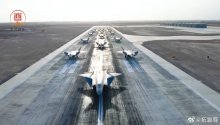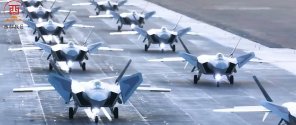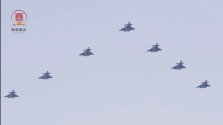I think based on CAC factory expansion + this, 150 J-20s a year will happen in another 3 years.
And I also think large UCAV production is about to get started.
I had expected them to continue producing J-20s at about 100 a year, but this to me seems like a concerted effort by PLA to dramatically increase the size of their stealth aircraft force. I think all the J-10A and J-11A units will get replaced by the end of this decade.
One interesting thing about China's massive adoption of industrial robots and automation is, human workers need to be paid regardless if he/she does anything, and human loses skill if idled for too long, while an unpowered and sealed robot require no maintenance, consume no energy and do not forget its programming.
So for things that reach high level of automation, like ammo, shells, missiles, drones, it does not actually cost very much to reserve large surge capacity, especially with China both operates and installs more than half of all robots on the planet.
General Atomics recently claimed (if not boasted) that their factory will be able to produce CCAs at a rate of one airframe every two days (i.e. 182.5 airframes per year), and one airframe per day (i.e. 365 airframes per year) after expansion.
Given that Chengdu AC is already capable of rolling out ~100 twin-engine J-20s per year, and that LockMart is capable of producing 150+ single-engine F-35s per year (at full-rate production) - CCA-type UCAVs that are comparably smaller and less complex than manned fighters should be consiserably easier and cheaper to build.
And given China's present state of advanced manufacturing prowess, no doubt China will certainly be able to match if not surpass that proclaimed production capability.
In the near future, we could actually see future combat warplanes being made like how our cars are being made today.
In the meantime, besides the J-20, J-16 and Sino-CCA, there are definitely way greater demands for such metamaterials from the likes of J-31/35, flying wing U(C)AVs (GJ-11, CH-7, Sky Hawk etc), H-20 and even the Sino-NGAD.
Last edited:



